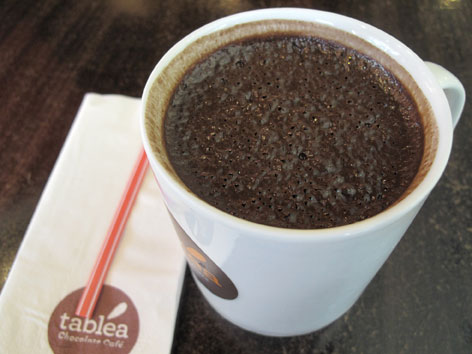Ethiopian Chicken Stew (Doro Wett)
Ethiopia
amantour
guides you to the best local dishes & drinks in
125+ cities. See map now



.jpg) Going somewhere and wish you could take all of a city’s Eat Your World info with you? With EYW’s Kindle and City Guides, you can! Don’t miss out on any local foods or drinks during your next trip.
Going somewhere and wish you could take all of a city’s Eat Your World info with you? With EYW’s Kindle and City Guides, you can! Don’t miss out on any local foods or drinks during your next trip.
EYW wants your food photos!

EYW wants your food stories!
Hey guys I am a traveler who loves to explore different places around the world. I often visit outside of Canada, So whenever I have to travel around the world I always book my flight tickets from the... Read more


What: The Cebuano version of hot chocolate, sikwate (“sik-wah-teh”) is the closest you’ll get to drinking pure, raw chocolate. It starts with tableya de cacao (literally “tablets” of cacao), made from cacao (cocoa) beans that are dried, roasted, milled, and then hand-formed into tablets. The tableya are boiled with water in a special jug, and then frothed using a batirol, a wooden instrument that’s rolled between the hands to release the cocoa butter (and produce froth). Finally, sugar and milk are added, resulting in a sweet, smooth hot chocolate drink.
Good to know: The 300 or so years of Spain’s colonization of the Philippine islands created the Manila-Acapulco Galleon Trade, through which many plants from the New World arrived here—including the cacao tree, which is native to South America.
Where: Many will tell you that the best sikwate is homemade, but failing that, head to Tablea Chocolate Café (multiple locations including JY Square Mall, 1 Salinas Dr., corner Gorordo Ave., map), the first café on the island to specialize in tableya-based goodies. It is the place for chocolate everything, from layer cakes and truffles to cookies and cupcakes, as well as non-chocolate items that complement chocolate drinks, like ensaymada (sugar-sprinkled yeast rolls) and Spanish-style churros (deep-fried dough sticks). Filipinos will generally accompany a drink with something to eat, and sikwate is no exception: Pair it with slices of fresh mango and puto maya (“poo-toh mah-yah”) or pilit (“pi-lit”)—both variations of sweet, sticky rice cakes that are great for breakfast or as afternoon snacks.
When: Sun-Thurs, 7am-10pm; Fri-Sat, 7am-midnight
Order: A mug of traditional sikwate (Php 75). The drink is so dark, you can hardly see the layer of froth covering the top. And the taste? It’s like drinking deliciously rich chocolate velvet, except for the slightly gritty bottom—a reminder of the drink’s handmade origins. As for the rest of the yummy chocolate stuff on offer here, our personal favorites were the chocolate-covered cacao beans, sold in small packages—nothing’s more chocolaty than crunchy whole-roasted cacao beans double-dipped in dark chocolate. Souvenir alert!
Alternatively: Café Laguna (The Terraces, Ayala Center Cebu, map) serves tsokolate (“cho-ko-lah-the”), which is what non-Cebuano speakers would call a hot chocolate drink, or anything made of chocolate. It’s a slightly bitterer, sweeter, and grittier version than Tablea’s. In the same mall, there’s also a stall across from the pharmacy in the supermarket of Metro Ayala (lower ground floor, Ayala Center Cebu, map) that sells sikwate straight from the drink’s special cooking jug, called a tsokolatera.
©2025 Eat Your World, LLC - All Rights Reserved